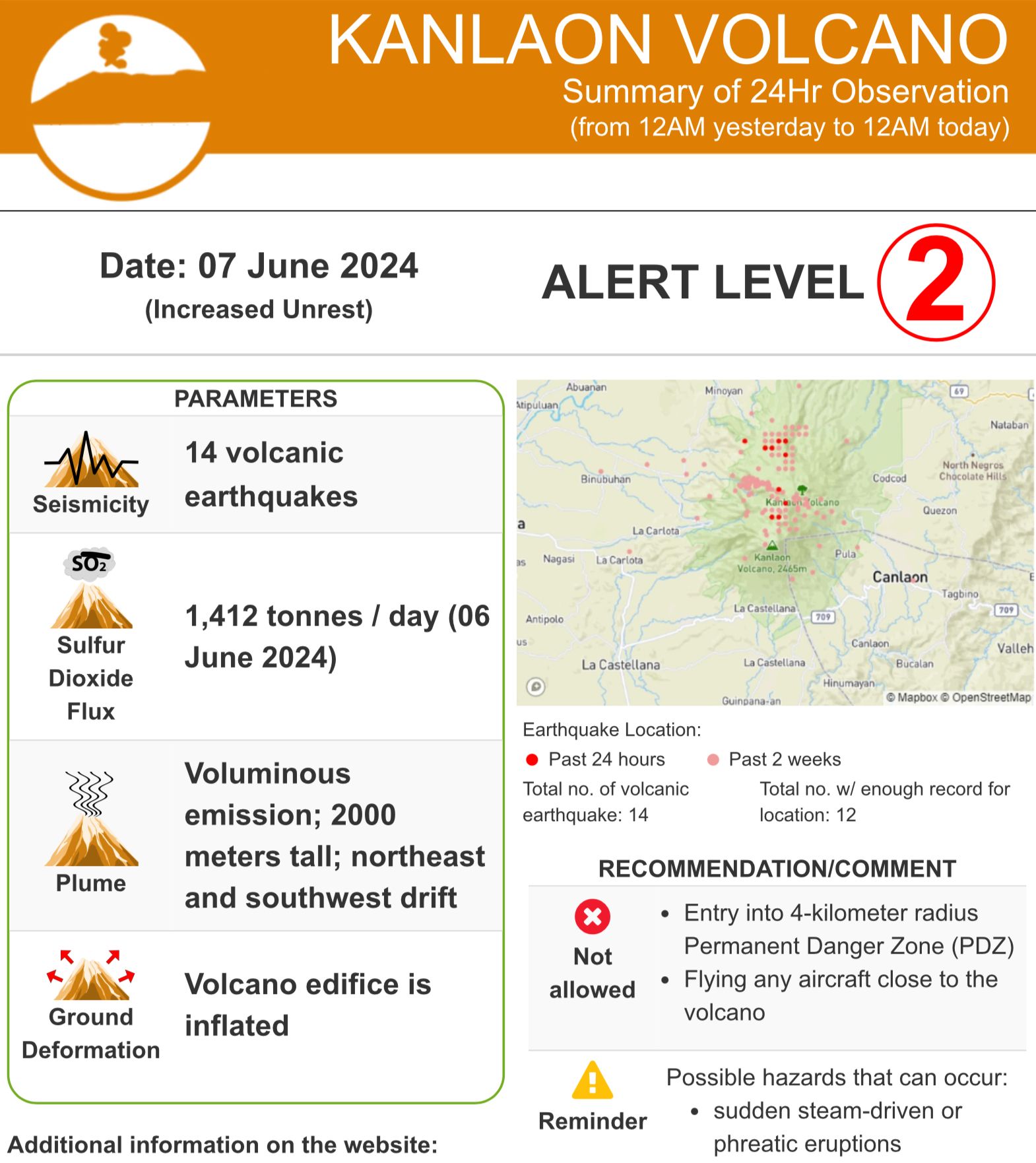
While it has remained quiet since its eruption, the alert status of Kanlaon Volcano remains at Level 2, signifying that the volcano in Negros Island is still experiencing “increased” unrest.
Based on a volcano bulletin issued by the Philippine Institute of Volcanology and Seismology (Phivolcs) at 8 a.m. on Friday, June 7, Kanlaon experienced 14 volcanic earthquakes, down from 27 the previous day.
Likewise, sulfur dioxide emissions were measured at 1,412 tons on June 6, indicating a decrease from 3,464 tons on June 5.
Phivolcs said Alert Level 2 remains in effect for Kanlaon Volcano due to ongoing “moderate” volcanic unrest.
This indicates elevated levels of volcanic earthquake, temperature, acidity, and volcanic gas concentrations in monitored springs and fumaroles, as well as the potential for steam and ash explosions from the summit crater or new vents, and inflation or swelling of the volcano’s edifice.
The public is reminded that entry into the four-kilometer radius permanent danger zone (PDZ) is strictly prohibited.
Some parts of Ara-al and Yubo in La Carlota City; Sag-ang, Mansalanao, Cabagnaan, and Biaknabato in La Castellana; Minoyan, Murcia; Masolog, Pula, and Lumapao in Canlaon City; and Codcod in San Carlos City are within the PDZ.
Phivolcs urged local government units, disaster officials, and the public to avoid the PDZ due to the high likelihood of similar explosive eruptions, which could lead to volcanic hazards such as pyroclastic density currents and ballistic projectiles within the area.
It is noted that Kanlaon occasionally experiences phreatic and short-lived explosive eruptions that cause minor hazards.
Among the 43 eruptions recorded since 1866, Phivolcs said only the 1902 eruption was magmatic.
A phreatic eruption involves water coming into contact with hot volcanic materials—hot gases or hot rocks—resulting in explosive steam, while a magmatic eruption is driven by the release of magma and volcanic gases.
Before the June 3 explosive eruption, the last phreatic eruption of Kanlaon Volcano occurred in December 2017.